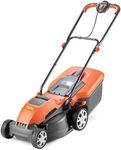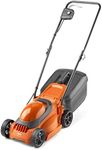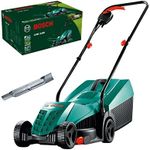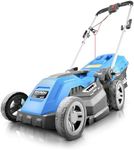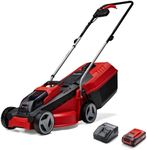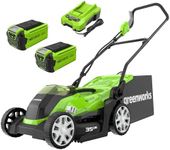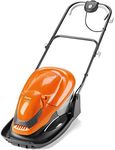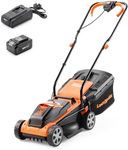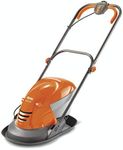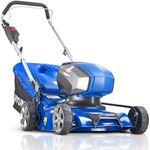Buying Guide for the Best Small Electric Lawn Mowers
Choosing the right small electric lawn mower involves understanding your lawn's specific needs and matching them with the mower's features. Electric lawn mowers are a great choice for small to medium-sized lawns due to their ease of use, low maintenance, and eco-friendliness. When selecting a mower, consider the size of your lawn, the type of grass, and any obstacles or slopes you may have. This will help you determine the necessary power, cutting width, and additional features that will make mowing your lawn a breeze.Power SourceElectric lawn mowers can be corded or cordless. Corded mowers are powered by electricity through a power cable, which means they have unlimited run time as long as they are plugged in. They are ideal for small lawns where an extension cord can easily reach all areas. Cordless mowers, on the other hand, are battery-powered, offering more freedom of movement without the hassle of a cord. However, they have limited run time based on battery life, which can be a consideration for slightly larger lawns. Choose a corded mower if your lawn is small and easily accessible with a power outlet, or a cordless one if you prefer more mobility and have a slightly larger area to cover.
Cutting WidthThe cutting width of a lawn mower refers to the width of the strip of grass it can cut in a single pass. This is important because it affects how many passes you'll need to make to mow your entire lawn. For small lawns, a cutting width of 14 to 16 inches is usually sufficient, allowing for easy maneuverability around tight spaces and obstacles. If your lawn is slightly larger or more open, you might opt for a cutting width of 18 to 20 inches to reduce the number of passes needed. Consider the size and layout of your lawn to determine the most efficient cutting width for your needs.
Battery Life (for Cordless)For cordless electric lawn mowers, battery life is a crucial factor as it determines how long you can mow before needing to recharge. Battery life is typically measured in amp-hours (Ah), with higher values indicating longer run times. For small lawns, a battery with a capacity of 2.0 to 4.0 Ah should be sufficient, providing enough power to complete the job on a single charge. If your lawn is on the larger side of small or you have thick grass that requires more power, consider a battery with a higher capacity. Always check the manufacturer's estimated run time and compare it with the size of your lawn to ensure it meets your needs.
Height AdjustmentHeight adjustment refers to the ability to change the cutting height of the mower blades. This is important for maintaining the health of your lawn, as different grass types and seasons may require different cutting heights. Most electric mowers offer several height settings, typically ranging from 1 to 4 inches. For a small lawn, having a mower with easy-to-adjust height settings allows you to tailor the cut to your specific grass type and seasonal needs. Consider how often you might need to change the cutting height and choose a mower that offers convenient and precise adjustments.
Weight and ManeuverabilityThe weight of a lawn mower affects how easy it is to push and maneuver, especially in small or tight spaces. Lighter mowers are generally easier to handle and are ideal for small lawns with obstacles like flower beds or trees. Electric mowers are typically lighter than their gas counterparts, but there can still be variations in weight. If your lawn has many turns or requires frequent lifting, such as up steps or over curbs, opt for a lighter model. Consider your physical ability and the layout of your lawn when evaluating the weight and maneuverability of a mower.

